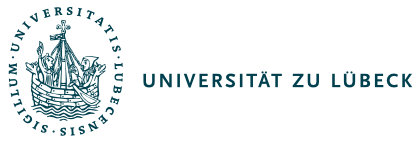Duration:
1 Semester | Turnus of offer:
each summer semester | Credit points:
4 |
Course of studies, specific field and terms: - Bachelor Computer Science 2019 (optional subject), major subject informatics, Arbitrary semester
- Bachelor MES 2020 (optional subject), computer science / electrical engineering, 3rd semester at the earliest
- Bachelor Media Informatics 2020 (compulsory), media informatics, 6th semester
- Bachelor Robotics and Autonomous Systems 2020 (optional subject), computer science, 5th or 6th semester
- Bachelor Medical Informatics 2019 (optional subject), computer science, 4th to 6th semester
- Bachelor Computer Science 2016 (optional subject), major subject informatics, Arbitrary semester
- Bachelor Robotics and Autonomous Systems 2016 (optional subject), computer science, 5th or 6th semester
- Bachelor IT-Security 2016 (optional subject), computer science, Arbitrary semester
- Bachelor Medical Informatics 2014 (optional subject), computer science, 5th or 6th semester
- Bachelor MES 2014 (optional subject), computer science / electrical engineering, 4th or 6th semester
- Bachelor Media Informatics 2014 (compulsory), media informatics, 6th semester
- Bachelor Computer Science 2014 (optional subject), central topics of computer science, 5th or 6th semester
- Bachelor Medical Informatics 2011 (optional subject), computer science, 4th to 6th semester
- Master Computer Science 2012 (optional subject), advanced curriculum imaging systems, 2nd or 3rd semester
- Bachelor CLS 2010 (optional subject), mathematics, 6th semester
- Bachelor Computer Science 2012 (optional subject), central topics of computer science, 5th or 6th semester
- Master CLS 2010 (optional subject), mathematics, 2nd semester
- Bachelor Computer Science 2012 (compulsory), specialization field media informatics, 5th or 6th semester
|
Classes and lectures: - Computer Graphics (exercise, 1 SWS)
- Computer Graphics (lecture, 2 SWS)
| Workload: - 45 Hours in-classroom work
- 55 Hours private studies
- 20 Hours exam preparation
| |
Contents of teaching: | - Geometric transformations in 2D and 3D
- Homogeneous coordinates
- Transformations between Cartesian coordinate systems
- Planar and perspective projections
- Polygonal models
- Illumination models and shading methods
- Texture Mapping
- Culling and clipping
- Hidden line and surface removal
- Raster graphics algorithms
- Ray tracing
- Shadows, reflections and transparency
- Basics of graphics programming with OpenGL and GLSL
| |
Qualification-goals/Competencies: - Students know the basic concepts, algorithms and methods in computer graphics
- They are able to implement and apply principle algorithms
- They are able to explain the learned techniques and to assess their possibilities and limitations
|
Grading through: |
Requires: |
Responsible for this module: Teachers: |
Literature: - Foley et. al: Grundlagen der Computergrafik - Addison-Wesley, 1994
|
Language: |
Notes:Admission requirements for taking the module:
- None (the competences of the modules listed under ''requires'' are needed for this module, but are not a formal prerequisite)
Admission requirements for participation in module examination(s):
- Successful completion of exercise slips and programming projects as specified at the beginning of the semester
Module exam(s):
- CS3205-L1: Computer Graphics, written exam, 90 min, 100 % of module grade |
Letzte Änderung: 20.4.2023 |



















für die Ukraine